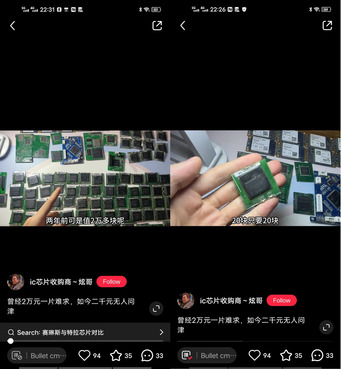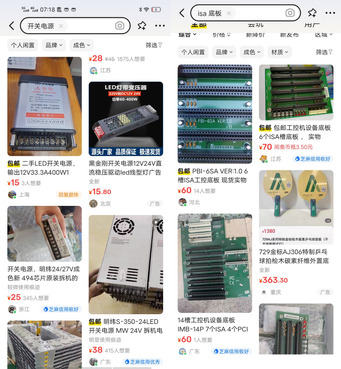kagamma wrote on 2024-05-14, 04:45:
A quick glance at the schematics shows that the video adapter shares the same interface as the Pocket 386. I personally don't really like this, it makes all the parts for the Book 8088 v2 go to waste.
Edit: Also look like we can slot both 8086 & 8088.
Um, okay. I didn't know they're sort of rivals, but different configurations of same thing.
I mean, both the Book 8088 and the Pocket 386 have their common deficiencies, especially in the video era.
CGA would need a proper composite output for NTSC artifact graphics,
whereas the Pocket 386 / VGA graphics lack CRT emulation (or at least an optical lense/magnifier/foil for desired effect/blurriness).
Playing games on either handheld is a far cry from real thing, all in all.
But still cool though, sort of, I admit. Having DOS, Norton Commander or QB45 with you in your pocket is so cool! 😎👍
Speaking of the display itself, I think a random screen wit av input (ntsc/pal) would have been a better solution for the 320x200 games to begin with.
These screens are often 7" and sold as car parking assistant monitors, along with a little CMOS camera.
I mean, the whole digital/RGB aspect looks weird to me in this respect.
Personally, I think the blurrier the image, the more we do the former game artists justice.
Because back in the day, pixel-art never meant to produce pixelated images.
It wasn't an art-style yet. Except for Hercules graphics, maybe. ;)
Pixel-art was more of a craftsmanship about setting tiny pixels next to each others in specific way,
so that the illusion of a smooth image would be created.
Just think of the NES or Gameboy titles. Artists did wonders to make the GB sprites look smooth
(the 4 shades of green of the original dot matrix screen were often used to smoothen the drawings).
That being said, I'm glad that the Book 8088 doesn't come with a V20 by default.
It's a precious item, it would be sad to see it go to waste. Just kidding! It's the V30 that's precious! :D
PS: All in all I do think that gargoyle has worded things well.
Personally, I'd put it this way: As long as vintage items don't end up in the hands of scrappers or in a landfill, it's a good thing.
If parts are getting used up for either project here, they've been saved.
It's still possible to take the precious parts out of Book 8088 and Pocket 386 and re-use them.
So I'm rater relaxed here. ^^
Edit: Now for a more, um, productive comment: How about a PCMCIA/PC Card slot?
- I know these were never popular, but many 8088 sub notebooks (handhelds) had them.
So other period correct accessories could be used. If there's some space left, I mean,
and if enough mechanical PCMCIA slots are still available as NOS.
Sure, I know that Book 8088 already has a pin header with PC bus signals..
But on other hand, having an optional PCMCIA slot would allow using third-party peripherals.
CardBus for Pocket 386 would be 32-Bit, even, but also way too complicated to implement, I suppose.
Third-party peripherals fir CardBus weren't too popular, either, maybe.
Anyway, these are just sone thoughts. Feel free to just ignore them and go on.
I was thinking out loud here, essentially. No offense. 😅
Oh and last but not least, let's don't forget that the Book 8088 has its roots in the model making sceene.
So it was more about paying the IBM PC tribute, I guess, rather than being functional.
Edit: Edited. Formatting fixed.
"Time, it seems, doesn't flow. For some it's fast, for some it's slow.
In what to one race is no time at all, another race can rise and fall..." - The Minstrel
//My video channel//

